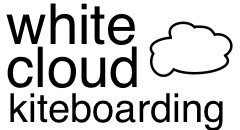OASI Tranq
The Tranq is our most versatile progression oriented board in the line, a true all-round vehicle for those who need it.
Features:
– Full wood core.
– Sintered Ptex base.
– 600gram triax glass.
– 3mm Belly Channels.
– 3mm Tunnel Concave.
– Matte deck finish.
Sizes:
155cm x 43.7cm – Rocker 7cm.
149cm x 43.0cm – Rocker 6.6cm.
143cm x 42.3cm – Rocker 6.2cm.
138cm x 41.3cm – Rocker 5.8cm.
Weight: 3.2kg (Based on 149cm size).
(Rocker may vary slightly as this is never an exact science no matter what other brands tell you).
*NOTE – We can’t stress it enough but this board is really designed to be ridden longer, the width and rocker are made to accommodate that, riding it in a length similar to most other boards on the market may make it feel like a much slower board than you’re used to, the extra length of a bigger size allows you to have a more aggressive rocker line without the drawbacks that would create on a shorter board. If you want something closer to a traditional “kiteboard” ride the Quill instead.
For this season we’ve taken the Tranq a little further back towards it’s Freestyle roots, by narrowing out the tips and overall width a little you get a longer board that’s now better for high level freestyle or tech hits. If you like an overall wider platform like the 2019-2020 Axis Tranq you may now prefer the Quill instead.
The Tranq is the original do it all board, if you don’t know what board to buy you should probably buy the Tranq.
Suited best to those who want to ride a wide range of disciplines from Freestyle, to Freeride, Big Air and Park, size up or down according to which discipline you wish to ride.
The Tranq is built to be ridden longer (7-15cm) for Freestyle or Park with a narrower overall profile and tips (than either the Quill or Wraith), or alternatively ridden shorter and narrower at more mainstream Kiteboard lengths as a fully powered high wind Big Air board.
The Tranq is liveliest board in the line up with 3mm channels on the heelside and toeside rails through the belly of the board and a central 3mm deep tunnel concave extending from tip to tip. We only added what we believed was needed to the base in order to keep the board as quick and lively as possible.
The channels and concave add extra stiffness between the feet whilst reducing weight and adding directional stability, helping riders better transfer their reactions through the board to get the most out of a load and pop for an air trick, land more cleanly from bigger heights or grip harder through aggressive rail to rail transitions.
If more grip is needed when edging we recommend you ride bigger fins (this provides the same function as deeper nose and tail channels would).
Compared to the Quill:
If direct sizes are compared (155 Vs 155) the tranq feels much more like a traditional 142-146 size that has simply been extended. The tranq doesn’t feel overly big or heavy, it just feels like a regular board with more nose and tail. In comparison to the Quill the Tranq feels a little lighter underfoot due to the decreased width and added channel which removes some of the core reducing weight. This reduced weight and added channel makes for a board that feels a little snappier and livelier than the Quill, as such hardcore Freestyle or Kicker bandits will likely prefer the Tranq over the Quill. For pure Park or Freeride fun the Quill is a more stable and predictable board with a more even flex profile through the whole board due to the lack of belly channels and the overall wider profile and tips, this added stability and more consistent flex gives you a board that’s arguably a better Park or Freeride model than the Tranq with a better sense of control.
Tip to tip tunnel concave:
Working on the Tranq with Adrian Roper from Axis we first created this tunnel concave in around 2016, at the time we hadn’t seen any other boards incorporating the concept and to this day I still don’t know of many. Not long after our first release with the concept Firewire Tomo and Slater designs also started incorporating a similar approach. What this narrow tunnel does is help give a feeling of lift underneath the board whilst retaining a small amount of directional stability and grip. With this narrow tunnel Vs a more traditional rail to rail concave you still retain the level of release a flat base would give you but with some of the smoothing characteristics a rail to rail concave gives, this also makes it far more practical as a park board as the tunnel concave is perfect for better locking into pipes or rails. Another benefit is the concave helps break up the surface area of the base helping mitigate the suction effect to sliders or kickers that a flat base can often bring.
For this iteration I made the tunnel a consistent depth Vs the variable depth of previous as I believe that to be a more hydrodynamic approach.

